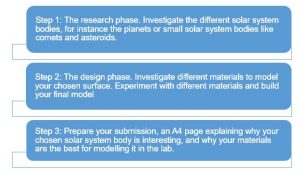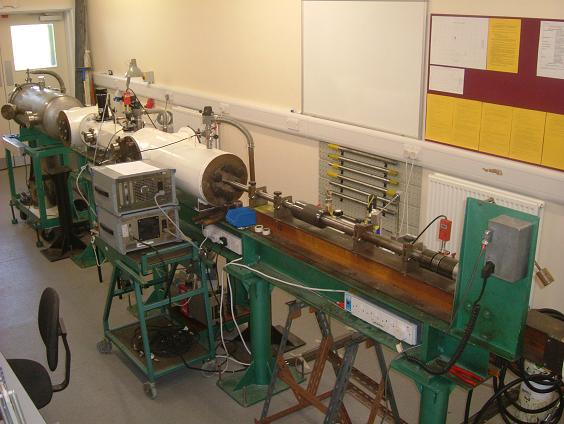Background
What sort of crater will an impact leave on a rocky or icy moon? At the University of Kent, we simulate such impact events to improve our understanding of them and the materials of the target and projectile bodies. We have a huge experiment to fire the right projectiles at the right speeds (up to 8 kilometres per second) to investigate the effect of impact collisions on different materials found in the solar system. Our experiments range from looking at how impact collisions form large craters on rocky bodies to testing out suitable space craft shielding materials, which will provide the best protection for astronauts. The equipment used is called the Two Stage Light Gas Gun (LGG) and actually fills a whole room. Want to see how the Light Gas Gun works? Watch our exciting 3D 360 VR Tour led by Dr Kathryn Harriss below:
Competition Brief
In this competition, we invite you to tackle the challenge that we face, mimicking the surface of solar system bodies in the lab. Our challenge to you is to build a model of a solar system surface that you think we should study. You should use everyday, easily accessible materials to design a model of a solar system body (e.g. the surface of a moon or a planet); you should justify the material choice and explain why the design is a good model for the chosen solar system body. For example, what material would be best to model an icy moon, an asteroid, or even a particular area of the earth? How could we simulate it in the lab?
Your model could be made up of several layers, if that is representative of your chosen surface, and can contain solids and liquids (for example to model an impact into Earth’s oceans you could use a bag of water over a layer of sand).

Model specifications
- The target must be at least 10 cm x 10 cm x 10 cm but no large than 50 cm x 50 cm x 30 cm
- Do not use flammable/explosive materials
- No animals/plants/lifeforms of any kind
- Your target must be able to survive at room temperature and a pressure of 0.2 millibar for 20 minutes
- No rubber
- No carcinogenic material
Judging Criteria
The submitted designs will be judged for creativity and justification of materials and the winning model will be built and impacted using the LGG. Video recordings of impacts will be made available to the winners and any other interested parties.
Competition Timeline
- Please submit entries via email to science@kent.ac.uk by 5pm Wednesday 17th July 2019
- Winners will be informed on Friday 19th July 2019
- Winning team will receive £20 amazon voucher each and the winning team’s school will receive a day of outreach activities of their choosing from the School of Physical Sciences (examples: Liquid Nitrogen Show, Planetarium, Forensic Science CSI)
Any queries please do not hesitate to contact us at science@kent.ac.uk

